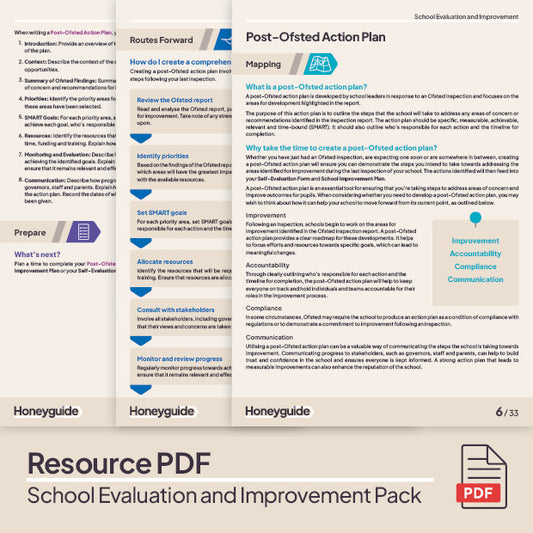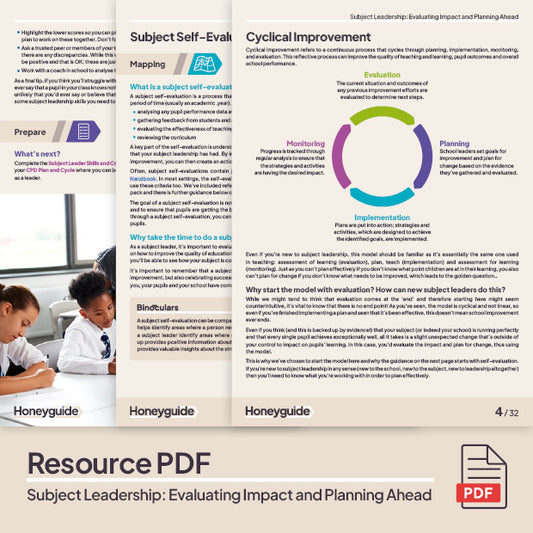Collection: School Improvement and Evaluation
Evaluate your setting's strengths and weaknesses in order to write your school self-evaluation form (SEF) then drive positive change through your school improvement plan (SIP).
-
School Evaluation and Improvement Pack
Regular price £17.50Regular priceUnit price / per -
Subject Leadership: Evaluating Impact and Planning Ahead
Regular price £15.00Regular priceUnit price / per -
School Self-Evaluation Form (SEF) Template
Regular price £2.00Regular priceUnit price / per -
SEND Self-Evaluation Form Template
Regular price £2.00Regular priceUnit price / per -
Subject Self-Evaluation Form Template
Regular price £1.50Regular priceUnit price / per










